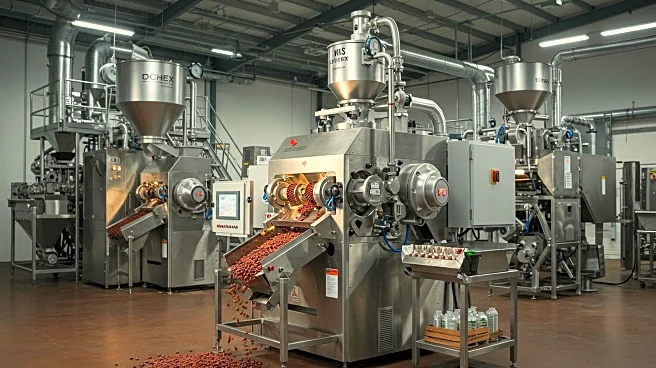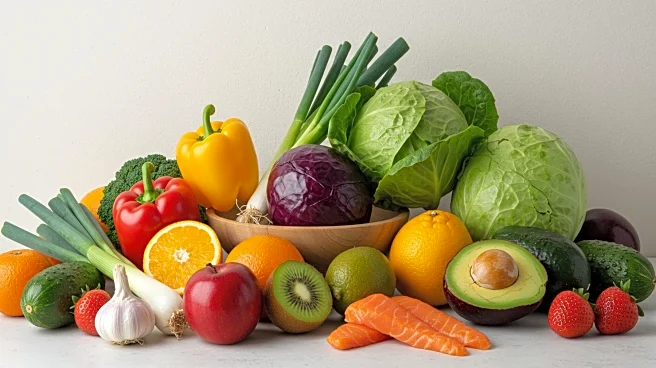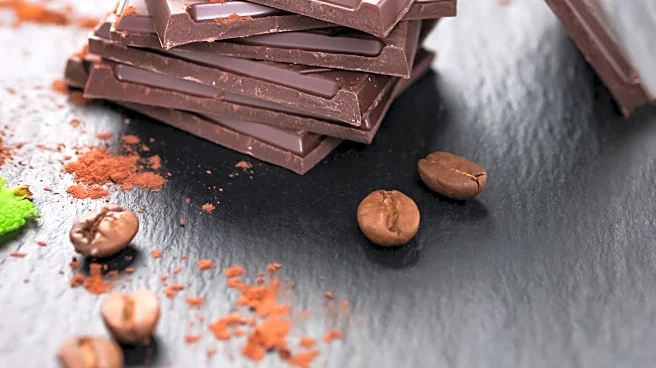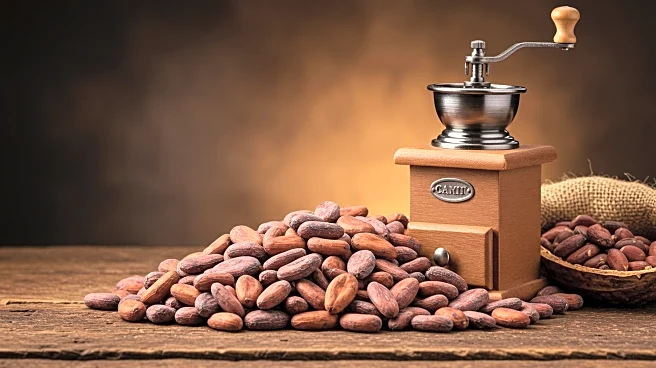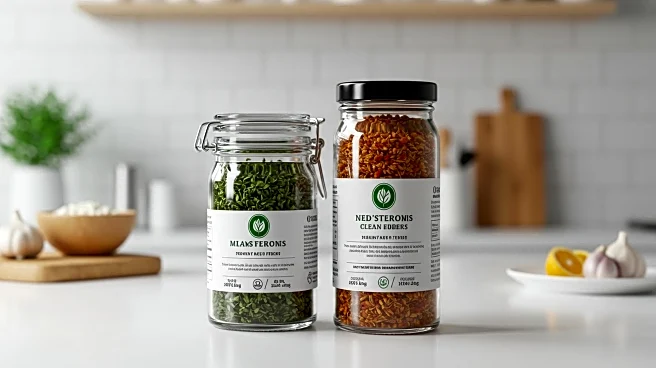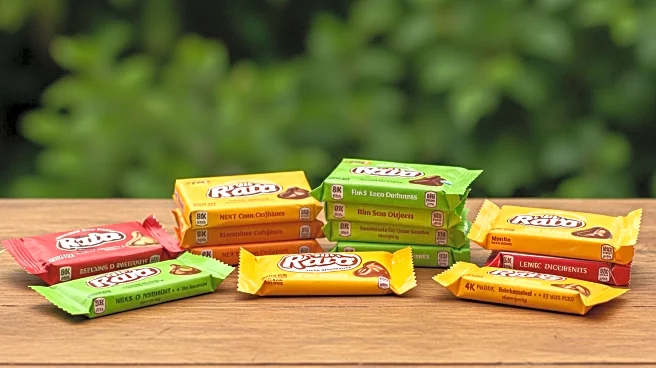What's Happening?
Nestlé has introduced a new cocoa processing technique that utilizes up to 30% more of the cocoa fruit, including parts traditionally discarded such as the pulp, placenta, and pod husk. This innovation aims to maximize yield from cocoa fruit, addressing challenges in the cocoa sector marked by supply shortages and price hikes due to disease and climate change. The process involves collecting all parts of the cocoa pod as a wet mass, which ferments naturally to unlock key chocolate flavors. This method is currently in the pilot stage, with Nestlé exploring scalability to enhance chocolate production efficiency.
Why It's Important?
The new technique by Nestlé is significant as it addresses the ongoing cocoa crisis, characterized by declining yields and increased prices due to environmental factors. By utilizing more of the cocoa fruit, Nestlé aims to provide a sustainable solution that could benefit cocoa farmers by increasing the material available for chocolate production. This approach not only helps in maintaining chocolate quality but also supports farmers in adopting climate-friendly practices. The innovation could lead to more efficient use of resources, potentially stabilizing the cocoa market and ensuring the availability of chocolate products.
What's Next?
Nestlé plans to scale up the new cocoa processing technique, which could lead to broader adoption across its production facilities. The company is focused on maximizing cocoa harvests and exploring further innovations to support farmers in improving yields. As the technique progresses beyond the pilot stage, it may influence industry standards and practices, encouraging other chocolate manufacturers to adopt similar methods. Stakeholders, including farmers and environmental groups, may react positively to this development, seeing it as a step towards sustainable cocoa production.
